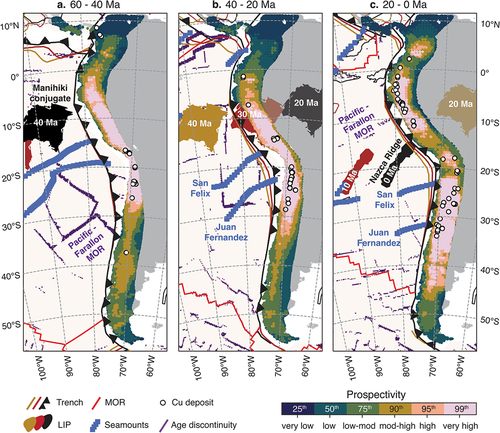Oceanic seafloor is scarred by age discontinuities, seamounts, and large igneous provinces (LIPs) over normal bathymetry. The recycling of these seafloor anomalies has been speculated to alter subduction regimes which may locally prime some regions for porphyry copper deposit formation. Using a tectonic plate reconstruction encompassing the last 100 Ma paired with a machine learning classifier trained on known porphyry copper deposits, we find that all porphyry systems require >45 km thick continental crust and a combination of plate tectonic features that is regionally variable, but this alone does not guarantee Cu-porphyry deposit formation. We find that the subduction of tectonic and volcanic features is well correlated with mineral emplacement, particularly along the American Cordillera. Seafloor anomalies have higher degrees of hydrothermal alteration and serpentinization compared to normal seafloor, resulting in enhanced oxidation of the sub-arc mantle upon their subduction due to the increased slab outflux of volatiles. Additionally, the subduction of fracture zones adjacent to buoyant LIPs can open slab tears which channel additional slab-derived volatiles underneath the overriding plate, leading to more fertile conditions for porphyry copper formation. Thus, subducting seafloor anomalies may increase the likelihood of forming Cu-porphyries.

Prospectivity of the South American cordillera. The evolution of seafloor anomalies are presented over three 20 Myr time windows: (a) 60–40 Ma shows the approach of the Manihiki conjugate prior to its subduction, (b) 40–20 Ma shows the subduction of the Manihiki conjugate underneath Peru and very high prospectivity in the central Andes, (c) Shows the approach of the Nazca Ridge and formation of two very high prospectivity bands in the northern and southern Andes. Prospectivity labels correspond to percentiles of the machine learning classifier prediction (very low = 25th percentile, low = 50th percentile, low-moderate = 75th percentile, moderate-high = 90th percentile, high = 95th percentile, very high = 99th percentile).
![]()

